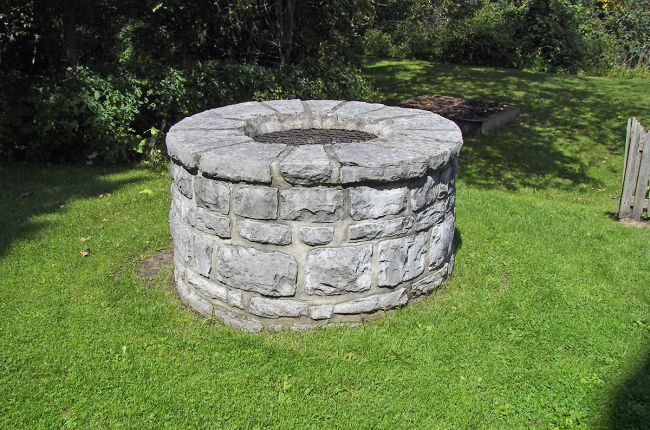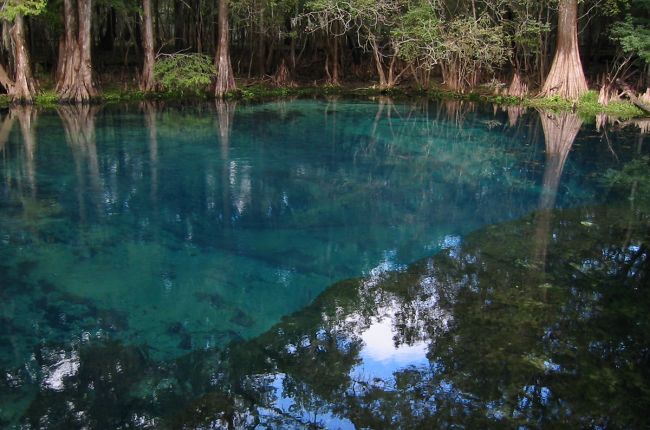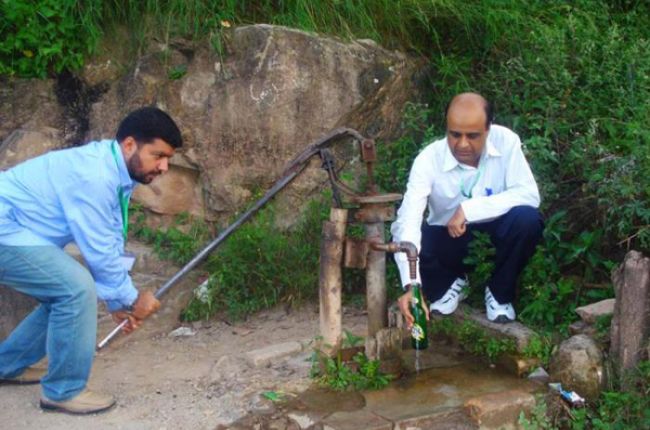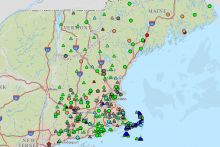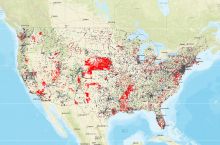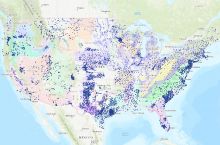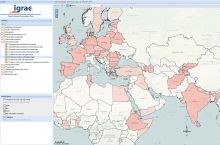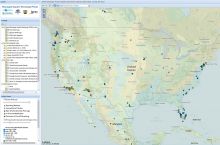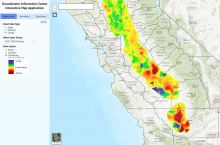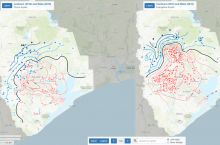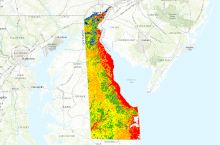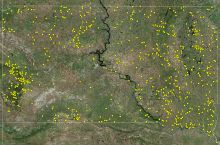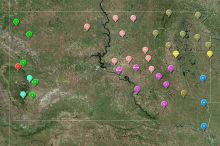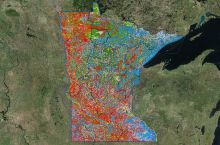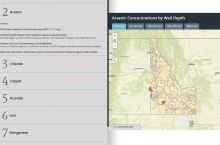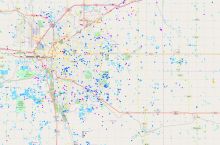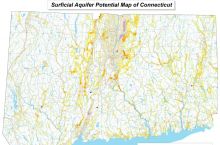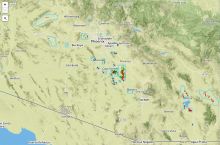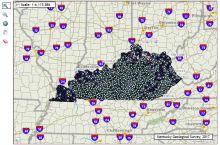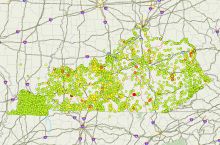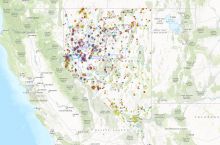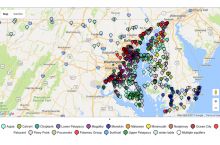Groundwater is an inevitable result of gravity: if surface water can seep into the ground before it evaporates or flows away, it will. Water also flows through rocks underground and may flow out of the ground into streams, rivers, lakes, or the ocean in places where the land surface is lower than the water table (e.g., at the bottom of a valley or the side of a cliff) – these outflows of groundwater are commonly called “springs”. In this way, surface water and groundwater are intimately linked – in some places, changes in groundwater levels can have major effects on the levels of nearby rivers and lakes, and vice versa.
Rocks and sediments that hold and transmit groundwater are called “aquifers.” Aquifers may be just beneath the land surface or very deep underground: water will continue to seep deeper underground until the rocks become too impermeable for the water to pass through. Groundwater that is recharged by surface water seeping through the ground is often fresh, but some groundwater is salty, either because the water originally came from the sea or because the groundwater dissolved minerals from the surrounding rock. Salty groundwater is used in some industries such as aquaculture, power generation, and oil and gas production, and can also be turned into fresh water by using various desalination processes.
Why does groundwater matter?
Groundwater provides 25% of the fresh water used in the United States. It is a particularly important water source in some of the more arid parts of the country, such as the High Plains of the central-western United States, where groundwater supplies up to 95% of the fresh water used. Groundwater is also less sensitive than surface water to seasonal variations in weather, making it an important water source during droughts. In areas that are not connected to public water infrastructure, many people rely entirely on water wells for domestic and industrial use.
The extraction of groundwater does pose some risks: if groundwater is extracted more rapidly than it is replenished, water levels can drop, wells may run dry, and further extraction may not be sustainable. Excessive groundwater withdrawal can also cause subsidence of the land surface if the spaces that were previously filled with water are compacted. This subsidence can create fissures in the ground and increase the local flood risk. Effective groundwater management, sometimes including techniques to enhance aquifer recharge, helps to maintain an abundant water supply.
How does geoscience help inform decisions about groundwater?
Geoscientists locate groundwater resources, calculate their size, and measure their quality. Geoscientists also study how groundwater and surface water interact, and assess the impacts of human activity on groundwater by monitoring and modeling groundwater levels over time, identifying contamination risks, and determining ways to prevent or remediate groundwater contamination.
Learn More
Introductory Resources
- Groundwater Information (Webpage), U.S. Geological Survey Water Science School
Basic information on the science of groundwater, human interaction with groundwater (wells, groundwater depletion, and overuse), groundwater quality (pesticides, contaminants, water well contamination), use of groundwater, and groundwater measurement, discussion of groundwater and the water cycle, and links to USGS Groundwater data.
- Groundwater Fundamentals (Webpage), National Ground Water Association
More detailed information about a range of groundwater issues, including availability, use, well information, geothermal heat pumps, tools for studying groundwater, and information for teachers.
- Groundwater Use in the United States (Factsheet), American Geosciences Institute
Information on the sources and uses of groundwater across the United States, including information about the states that use the most groundwater (mostly for irrigation).
Resources for Educators
- Education Resources Network, AGI's Center for Geoscience & Society
Search for water availability resources in: Organizations, Curricula & Instruction, Teaching Media, Outreach Programs
- NGSS Performance Expectations, Next Generation Science Standards
MS-ESS3-1, HS-ESS3-1
- NGSS Disciplinary Core Ideas, Next Generation Science Standards
ESS3.A

